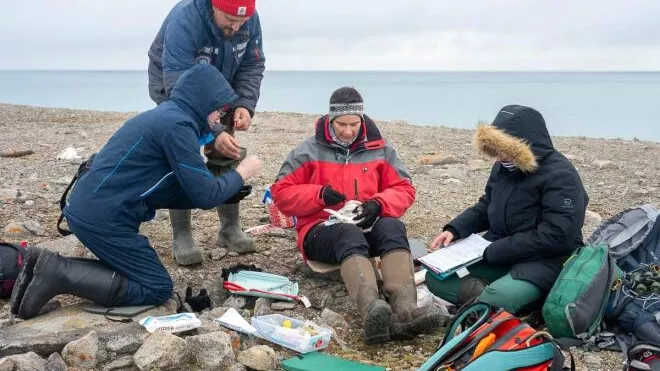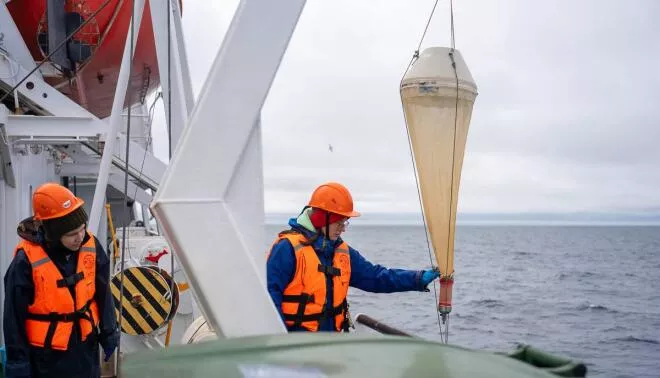
Image: Arctic Floating University Expedition
Russian scientists have achieved a remarkable feat on the Franz Josef Land archipelago, uncovering a substantial collection of whale and seal remains. This significant discovery is poised to offer critical insights into the dynamics of past and present climate change.
The groundbreaking find was made during the `Arctic Floating University` expedition, which successfully concluded its comprehensive scientific research program across the waters and islands of the Barents Sea. Specifically, on Vilchek Island, a vast accumulation of whale and seal skeletons came to light following the retreat of a glacier.

Image: Arctic Floating University Expedition
This paleontological treasure holds immense value for researchers keen on studying historical sea level fluctuations, glaciation patterns, and the climate evolution of Franz Josef Land. Its discovery is particularly relevant within the broader context of contemporary global warming.
The scientists emphasized that these ancient remains date back to the pre-industrial era. This fact provides compelling evidence of swift environmental changes that were already occurring in the Arctic, long before significant human activity began to influence natural cycles.
To accurately determine the age of these marine mammals and to reconstruct the dynamics of sea level changes at various historical elevations, samples of whale bones, mollusk shells, and driftwood were carefully collected for radiocarbon dating. Looking ahead, plans include conducting DNA analysis on the bone remains to precisely identify the whale species, alongside a detailed paleontological examination of the marine shells found on the island`s terraces.
Nikita Demidov, a researcher with the Arctic and Antarctic Research Institute (AARI), highlighted that the discovered skeletons are remarkably intact. This pristine condition indicates that they were not displaced or scattered by glaciers or the sea, but rather remain at the exact locations where these animals perished.











